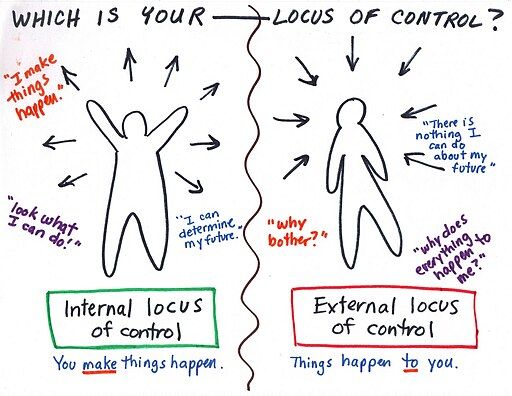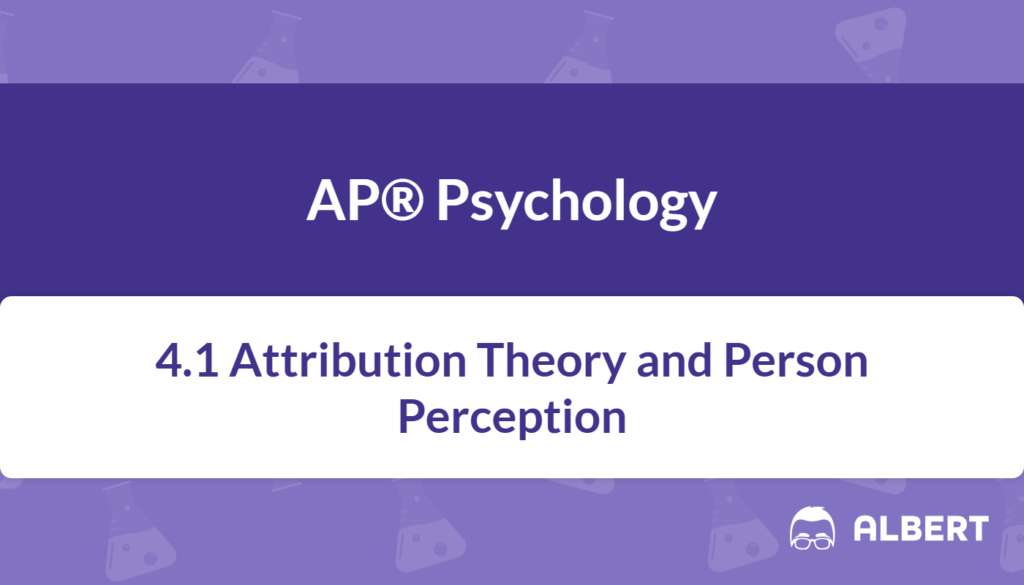What We Review
Attribution Theory explores how individuals interpret the causes of their own and others’ behaviors. This theory helps explain why people might credit someone’s success to intelligence (internal quality) or to luck (external factor). Understanding these ideas is important because it reveals how quick assumptions can shape interactions. This article provides a clear explanation of key concepts, including dispositional vs. situational attributions, explanatory styles, biases, locus of control, and person perception. Therefore, take a moment to review each section carefully and see how these concepts can apply to everyday experiences.
Introduction
Attribution Theory helps clarify how people perceive behavior and mental processes. It suggests that everyone forms judgments based on either personal qualities or outside circumstances. This matters for psychology because noticing these explanations can influence future decisions and relationships. For example, believing a peer succeeded due to talent alone may ignore conditions like supportive teachers or family. Next, this article explores the essentials of Attribution Theory and person perception, including important terms and biases.
What Is Attribution Theory?
Attribution Theory involves the process of deciding what causes a person’s behavior. It explains whether we believe actions come from a person’s character (dispositional) or from the environment (situational). It matters in psychology because it helps predict how people will respond to triumphs, setbacks, and challenges. People often weigh internal qualities versus external factors. These explanations shape how individuals interpret responsibility and blame.
Example: Analyzing a Situation at School or Work
Imagine a student who scores very high on a math test.
- Observe the behavior: The student received an A+.
- Consider possible causes: The student might be naturally gifted (internal) or had an excellent tutor (external).
- Make an attribution: If someone believes the student is just “smart,” that is a dispositional attribution. If the belief is that the student had extra help, that is a situational attribution.
- Conclude the impact: The way others explain this success affects how they treat the student.
Types of Attributions
Dispositional Attributions
A dispositional attribution credits behavior to internal qualities such as personality, intelligence, or emotions. For instance, if a friend is late and one assumes it is because they are disorganized, that aligns with a dispositional view.
Situational Attributions
Conversely, a situational attribution thinks about external circumstances. If the same friend is late, one might consider traffic or a family emergency instead of their personality.
A_{\text{score}} = \frac{\text{Internal Influences}}{\text{Internal Influences} + \text{External Influences}}
For instance, suppose someone estimates an overall “attribution score,” represented by A_{\text{score}}. If the ratio is close to 1, more weight is placed on internal qualities. If it is closer to 0, one is focusing on external factors.
Example: A Class Presentation
Picture a group presentation in class:
- Observe the outcome: The presentation goes very well, and the group gets a high grade.
- Identify each person’s reactions:
- Student A might say this success happened due to their strong public speaking skills (dispositional).
- Student B might credit the user-friendly software (situational).
- Note the group’s response: If many credit Student A’s personality, that shapes how they see future projects.
- Recognize the lesson: Attributions can shift group dynamics by influencing what or who gets praised.
Explanatory Style
Explanatory style refers to how individuals explain events, either optimistically or pessimistically. People with an optimistic explanatory style typically see setbacks as temporary and specific to a situation. On the other hand, a pessimistic style views problems as long-lasting and due to personal failings.
- Optimistic Style: Looks for short-term obstacles and unique external issues.
- Pessimistic Style: Blames enduring internal shortcomings, such as “I can never learn this.”
Importance in Personal Development
Explanatory styles can influence motivation, self-esteem, and resilience. Therefore, it is helpful to notice personal thought patterns to keep a balanced perspective.
Example: Evaluating Personal Academic Performance
Consider a student who receives a low grade on a quiz:
- Reaction A (Optimistic): Decide the quiz was unusually tricky and additional practice will fix the issue.
- Reaction B (Pessimistic): Conclude the grade reflects a lack of intelligence or ability.
- Outcome: Reaction A often leads to further effort, while Reaction B might reduce confidence.
- Reflection: Recognizing these styles helps students adapt strategies for success.
Biases in Attribution
People are subject to mental shortcuts and biases. These biases simplify decisions, yet they can warp reality.
- Actor/Observer Bias: Individuals tend to explain their own behavior as situational while viewing others’ actions as dispositional.
- Fundamental Attribution Error: This bias involves overemphasizing dispositional factors for others’ behavior while underestimating situational influences.
- Self-Serving Bias: This refers to attributing personal successes to internal factors and blaming failures on external ones.
Example: Group Project Dynamics
During a group project, the final product turned out poorly.
- Actor/Observer Bias in Action: Each team member might claim they faced a busy schedule (situation) but see others as lazy.
- Fundamental Attribution Error: The same individuals might unfairly judge a classmate’s struggle as a lack of skill, ignoring that classmate’s family emergency.
- Self-Serving Bias: Another student might claim credit for any small success but deny responsibility when things fail.
- Lesson: Recognizing these biases can help groups communicate more openly and fairly.
Locus of Control
Locus of control describes how people perceive the source of their successes and failures.
- Internal Locus of Control: Believers in this perspective think personal effort, talent, or dedication drives outcomes.
- External Locus of Control: Individuals see luck or external factors as the main cause of successes and failures.

Example: Approaching Success and Failure in Sports or Academics
- Internal View: An athlete who wins a match may point to disciplined training and practice.
- External View: Another athlete might say the match was won because of fortunate weather conditions or a referee’s decision.
- Consequence: These views influence motivation, with an internal locus often leading to a sense of responsibility and drive, while an external locus may lead to less control over long-term improvement.
Understanding Person Perception
Person perception involves how people form impressions of others. It often depends on repeated experiences, social comparisons, and expectations. Recognizing these effects can prevent quick judgments.
The Mere Exposure Effect
The mere exposure effect is when repeated exposure to something increases one’s liking for it. For instance, hearing a new song repeatedly may make it more appealing over time.
Self-Fulfilling Prophecy
A self-fulfilling prophecy happens when a belief about someone or something leads people to act in ways that confirm that belief. This can apply to classroom settings, where low expectations might result in reduced student performance.
Social Comparison
Comparing oneself to others can be upward (seeing someone as more skilled) or downward (seeing another as less fortunate or less skilled). These comparisons can affect self-esteem. For example, focusing on someone who performs better may lower confidence, while looking at someone who struggles more could boost self-image.
Example: Student Dynamics in a School Setting
Think of a new student joining a club:
- Mere Exposure: Each time the group sees this new member, familiarity builds.
- Self-Fulfilling Prophecy: If others assume the newcomer is shy, they might not include them, causing that student to remain quiet.
- Social Comparison: Some club members might compare their performance to this new student to feel more confident or more motivated.
- Outcome: Being aware of these processes can help everyone foster a more supportive environment.
Quick Reference Vocabulary Chart
Below is a convenient chart of important terms and definitions:
| Term | Definition |
| Attribution | The process of explaining behavior and mental processes in terms of internal qualities (disposition) or external circumstances (situation). |
| Dispositional Attribution | Attributing behavior to personal characteristics such as intelligence, personality, or mood. |
| Situational Attribution | Explaining behavior based on external events, environments, or other outside factors. |
| Explanatory Style | A habitual pattern of explaining outcomes, often labeled as optimistic or pessimistic. |
| Actor/Observer Bias | The tendency to attribute one’s own actions to external factors while attributing others’ actions to internal factors. |
| Fundamental Attribution Error | Overestimating the role of internal factors while underestimating external factors when judging someone else’s behavior. |
| Self-Serving Bias | Explaining personal success by internal factors and blaming failures on external causes. |
| Locus of Control | A belief about whether personal success or failure emerges from internal effort (internal locus) or external conditions (external locus). |
| Mere Exposure Effect | The phenomenon in which repeated exposure to a stimulus increases a person’s preference for it. |
| Self-Fulfilling Prophecy | A situation in which a belief or expectation leads to behaviors that cause the belief to become true. |
| Social Comparison | The process of evaluating oneself by comparing with others, which can be upward (against someone “better”) or downward (against someone “worse”). |
Conclusion
Attribution Theory and person perception guide how people interpret daily interactions. Recognizing the difference between dispositional and situational attributions helps avoid oversimplifying others’ behaviors. Meanwhile, explanatory style and locus of control remind individuals that outlook and self-belief play a major role in driving success or failure. Biases like the actor/observer bias and the fundamental attribution error can mislead judgments, but being aware of these tendencies allows for fairer assessments. Finally, the concepts of the mere exposure effect, self-fulfilling prophecies, and social comparisons show how impressions form and how expectations shape reality. These ideas can prompt high school students to reflect on personal thought patterns and interact more thoughtfully within peer groups.
Sharpen Your Skills for AP® Psychology
Are you preparing for the AP® Psychology test? We’ve got you covered! Try our review articles designed to help you confidently tackle real-world AP® Psychology problems. You’ll find everything you need to succeed, from quick tips to detailed strategies. Start exploring now!
- What Does Bias Mean?: AP® Psychology Review
- Social Situations: AP® Psychology Review
- Psychodynamic Psychology: AP® Psychology Review
Need help preparing for your AP® Psychology exam?
Albert has hundreds of AP® Psychology practice questions, free response, and full-length practice tests to try out.








